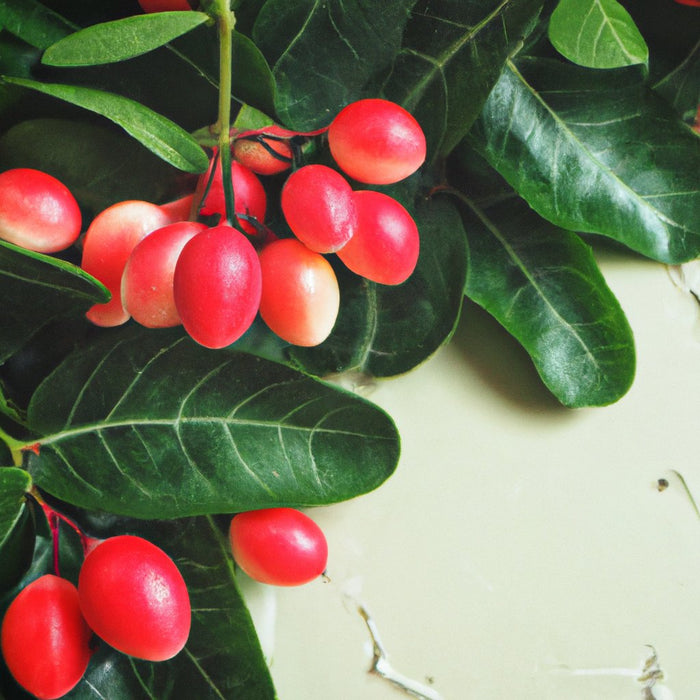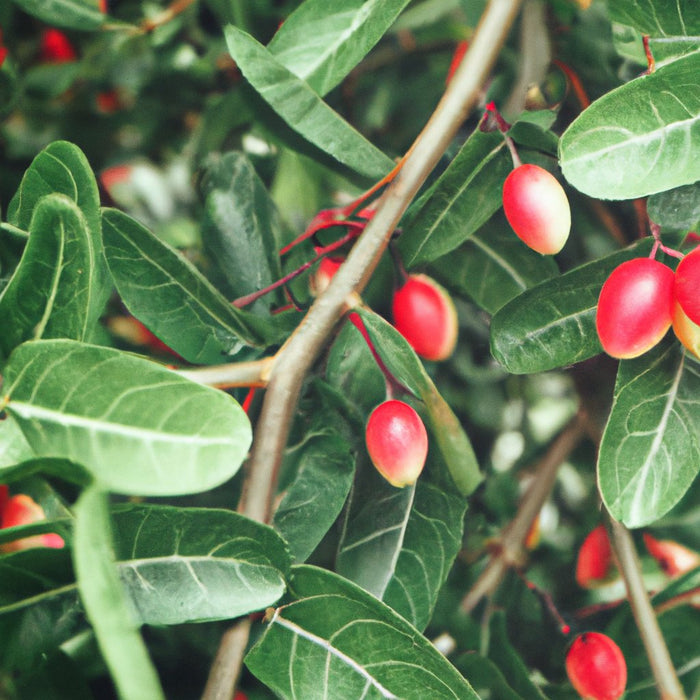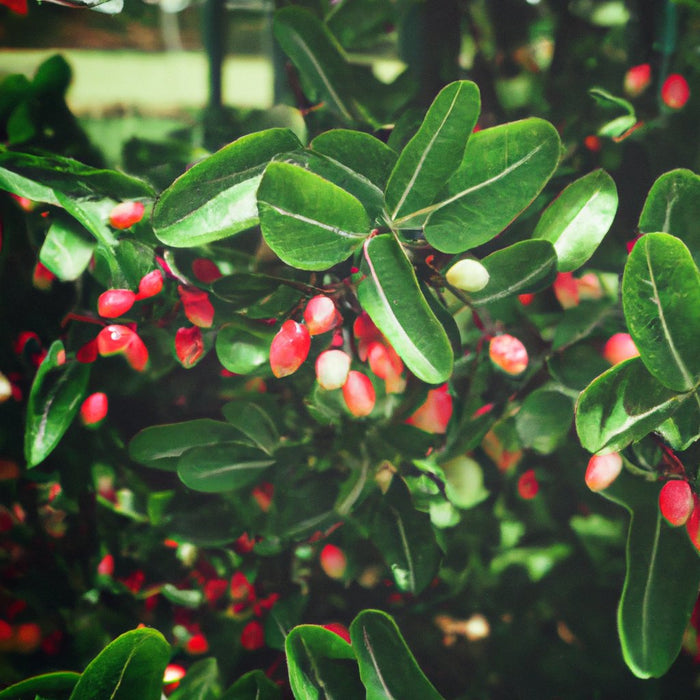- Common name:
- Miracle Fruit, Miraculous Berry, Miracle Berry
- Category:
-
Shrubs, Fruit Plants
- Family:
- Sapotaceae or Chikoo family
-
Introduction
The Miracle Fruit tree, also known as Synsepalum dulcificum, is a tropical plant native to West Africa. It is well-known for its small, red berries that contain a unique glycoprotein called miraculin. This protein temporarily alters taste perception, making sour and bitter foods taste sweet. The Miracle Fruit tree is gaining popularity among gardeners and enthusiasts for its unique properties and ease of cultivation.
Plantation
-
Location: Miracle Fruit trees require a warm, humid environment with temperatures between 60-90°F (15-32°C). It prefers partial shade to full sun, and well-draining soil.
-
Soil: The ideal soil for Miracle Fruit trees is acidic, with a pH ranging from 4.5 to 6.0. You can amend your soil with peat moss, leaf mold, or compost to achieve the desired acidity.
-
Planting: Dig a hole twice the size of the root ball, and plant the tree, making sure the top of the root ball is level with the soil surface. Fill the hole with the amended soil, and water thoroughly.
Growing
-
Watering: Miracle Fruit trees require consistent moisture. Water regularly, but do not overwater, as this can lead to root rot. Allow the top inch of soil to dry between waterings.
-
Fertilization: Apply a slow-release, acid-forming fertilizer specifically designed for acid-loving plants every 2-3 months. Follow the manufacturer's instructions for application rates.
-
Pruning: Prune your tree annually to maintain its shape, remove dead or damaged branches, and encourage new growth.
Care
-
Pest control: Inspect your tree regularly for common pests such as aphids, scale insects, and spider mites. Use insecticidal soap or neem oil to treat infestations.
-
Disease prevention: Miracle Fruit trees are generally resistant to diseases. However, maintain proper watering and avoid excessive moisture to prevent root rot.
-
Winter protection: If you live in a region with cold winters, consider growing your tree in a container so it can be moved indoors during colder months.
Benefits
-
Taste-altering properties: Miracle Fruit berries can make sour and bitter foods taste sweet, providing a unique culinary experience.
-
Health benefits: The fruit is rich in antioxidants, vitamin C, and other nutrients that promote overall health.
-
Natural sweetener: Miracle Fruit can be used as a natural, low-calorie sweetener for those looking to reduce sugar intake.
-
Ornamental value: The tree's attractive foliage and small, bright red berries make it a visually appealing addition to your garden.




